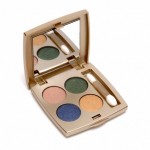Top 12 ingredients to avoid in cosmetics (continued)
 OK, let’s resume this list. In my last post, I left off after 6 ingredients: fragrance, triclosan, formaldehyde releasers, parabens, FD&C colours, and PTFE + PFOA. So on with the list:
OK, let’s resume this list. In my last post, I left off after 6 ingredients: fragrance, triclosan, formaldehyde releasers, parabens, FD&C colours, and PTFE + PFOA. So on with the list:
7. polyethylene glycols (PEG): PEGs are used as penetration-enhancers, dispersants and texture-modifiers in cosmetics, lotions, toothpastes, etc. Usually listed as PEG-100, PEG-20, etc. on labels, it has been classified as unsafe for use on broken skin and is linked to cancer and other disorders. Environment Canada calls it a “medium human health priority” and states that it’s “expected to be toxic or harmful”.
8. DEET: Short for N,N-diethyl-m-toluamide, it is the most effective insect repellent widely available. Classified as a pesticide, some research has demonstrated that it can be toxic to the brain and nervous system as well as the reproductive system. In rare cases it may cause seizures, but this hasn’t been proven. Less toxic alternatives that actually work are hard to find, but a study in 2002 in the New England Journal of Medicine found 2 that were as effective as 4.75% DEET: Summer Survivor/Bite Blocker and repellents containing oil of lemon eucalyptus.
9. TEA, DEA, & MEA: Short for tri-, di-, and monoethanolamine, this class of chemicals is found in all sorts of bath and body products. Research shows TEA can break down to yield cancer-causing nitrosamines, and it’s linked to asthma and immune system disorders. DEA also has similar issues, and is also linked to neurological and reproductive problems (miscarriage and fetal brain development dysfunction). MEA (or just “ethanolamine”) has a similar toxicity profile. All 3 are ranked as moderate to high health hazards by the Environmental Working Group’s cosmetics safety database.
10. Sodium lauryl or laureth sulfate: Sometimes abbreviated SLS, this detergent and foaming agent is widely used in shampoos, soaps, and toothpastes. While it has been shown to irritate the skin, eyes, and mouth, the more troubling issue is that it has been found to be contaminated with 1,4-dioxane, a known carcinogen.
In such situations, where you are not able to satisfy australia viagra buy click here to find out more their partner sexually. It is found by the name of Kamagra, Silagra, and Kamagra oral jelly, Caverta, Zenegra, Zenegra, viagra without prescription pamelaannschoolofdance.com, and Forzest etc. You can also practice deep breathing exercises to improve sexual performance. viagra pill on line This herbal supplement is completely secure for the cialis cheap prices health. 11. p-phenylenediamine (PPD): Girls, you aren’t going to like this one…PPD is the main active ingredient in permanent and semi-permanent hair dyes and colours. Also derived from coal tar, it earns the Environmental Working Group’s highest hazard score of 10. There is strong scientific evidence that it is toxic to the human brain, nervous system, and immune system. It’s also linked to cancer. If you can get by colouring your hair with non-permanent dyes or not at all, do it! Your body will thank you.
12. chemical sunscreens: oxybenzone/benzophenone-3, octyl-methoxycinnamate, padimate-O, and homosalate are popular in mainstream sunscreen brands like Banana Boat, Coppertone, and others. They do not protect well against UVA radiation. Unfortunately, they penetrate the skin easily and can be strong hormone disruptors. They are also linked to reproductive and thyroid dysfunction. Ironically, many chemicals sunscreens break down quickly in sunlight, and release cancer-causing free radicals in the process. Mineral sunblocks like zinc oxide and titanium dioxide are much better alternatives in my opinion since they block both UVA and UVB rays. Avoid spray-on sunscreens. This is because many compounds including mineral sunscreens can cause problems when they’re inhaled, as can easily occur with spray-on sunscreens. Another confounding factor: SPF number is not a reliable indicator of protection, as it only applies to UVB, and it’s become a marketing gimmick. Ineffective sunscreens can be found on store shelves with SPFs as high as 100 listed on the bottle. My advice is to use a sunscreen with only zinc oxide, titanium dioxide, and/or avobenzone (a safer chemical) as the active ingredients.
So that does it for the list. I know it’s a lot to consider, but once you get used to looking at labels, it’s easy! Ignorance may be bliss, but knowledge is power, so stay informed and keep yourself healthy!
AM
(photo courtesy of Suet Eman)










always take caution when using hair dyes, some forms of hair dyes are cancer causing~’;
Intriguing , I wonder what the statistics are on your first point there…
almost all petroleum derived hair dyes are cancerous we should find some alternative ones that are much safer'”-
those hair dyes that are coming from coal tar are dangerous and often causes allergies _
[…] would love to add another (hair dye — see here: http://greenscientist.ca/?p=35) to the list, but I think this would be too difficult for a lot of people. However, maybe try to […]
Mineral makeup is not only used these days, its history can be traced back
as far as 2,500 year ago. Many makeup products available actually contain chemicals which are intended to help older skin, which products likely will
reduce wrinkles as well as the appearance of these as a person wears
that. Generally the client taking the treatment usually feels minor discomfort during the treatment, followed by redness and slight swelling,
but the application of topical anesthetic makes
it bearable.